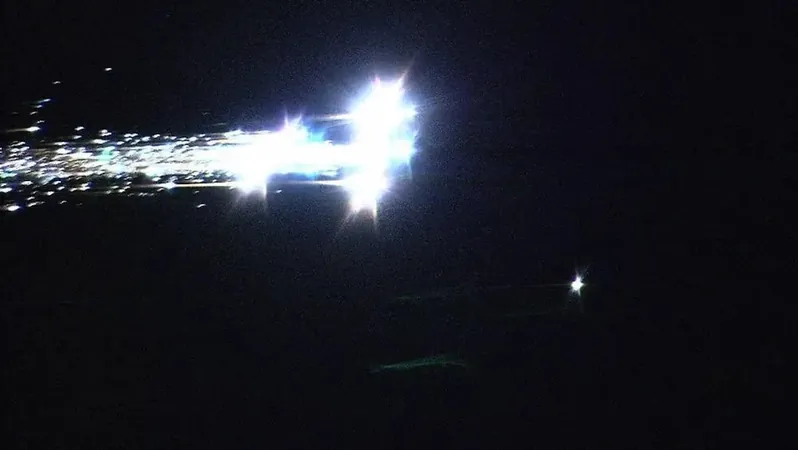
Unlocking the Secrets of Fireballs: How Seismic Signals From Hayabusa2 Are Revolutionizing Our Understanding
2025-05-23
Author: Nur
Seismic Signals: The New Frontier in Fireball Analysis
Imagine harnessing the power of seismic waves to unravel the mysteries of fireball events. In a groundbreaking study, researchers explore whether these signals can reveal crucial information about fragmentation during atmospheric entries, particularly through the lens of sample return capsules (SRCs) like the Hayabusa2.
The Hayabusa2 Mission: A Unique Opportunity
The Hayabusa2 SRC made headlines when it re-entered Earth's atmosphere on December 5, 2020, over South Australia. Thanks to a dense network of seismic stations that meticulously recorded its journey, researchers seized the chance to analyze the seismic signatures generated during this spectacular event. This one-of-a-kind data set opens doors to a deeper understanding of natural fireballs.
Diving Deep into Data: Analyzing Ballistic Trajectories
By isolating the seismic signals from the Hayabusa2 SRC, researchers confirmed that its ballistic trajectory served as the shock source for this event. This critical insight allows them to use it as a reference point, comparing it to three other fireball case studies that include a suborbital re-entry and two meteoroids. Their aim? To see just how seismic signals can clarify the origins and behaviors of these atmospheric phenomena.
Promising Results: Seismic Data's Potential Unveiled
While this initial study didn’t factor in local geological and atmospheric conditions, it yielded intriguing results. High correlations emerged for events characterized by ballistic trajectories, whereas those involving fragmentation showed lower correlations. This suggests that seismic data could differentiate whether a fireball event underwent significant fragmentation or an explosive airburst, two critical factors in evaluating the strength of these celestial bodies.
The Future of Fireball Research
What does this mean for the future of our understanding of fireballs? As research continues, the potential to refine our knowledge of atmospheric entries and improve threat assessments only grows. The ability to use seismic waves as a detection tool might change how scientists track and study these phenomena, offering a glimpse into the chaotic beauty of cosmic collisions.
For scientists like Iona Clemente, Eleanor K. Sansom, and their team, the quest to decode fireball dynamics has only just begun.



 Brasil (PT)
Brasil (PT)
 Canada (EN)
Canada (EN)
 Chile (ES)
Chile (ES)
 Česko (CS)
Česko (CS)
 대한민국 (KO)
대한민국 (KO)
 España (ES)
España (ES)
 France (FR)
France (FR)
 Hong Kong (EN)
Hong Kong (EN)
 Italia (IT)
Italia (IT)
 日本 (JA)
日本 (JA)
 Magyarország (HU)
Magyarország (HU)
 Norge (NO)
Norge (NO)
 Polska (PL)
Polska (PL)
 Schweiz (DE)
Schweiz (DE)
 Singapore (EN)
Singapore (EN)
 Sverige (SV)
Sverige (SV)
 Suomi (FI)
Suomi (FI)
 Türkiye (TR)
Türkiye (TR)
 الإمارات العربية المتحدة (AR)
الإمارات العربية المتحدة (AR)